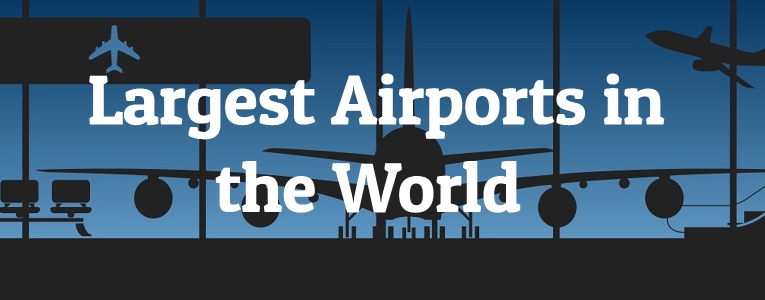As more people travel both domestically and internationally, many major airports have been expanding. As of the time of this writing, these are some of the largest airports in the world in terms of size (area). A majority of these large airports are in the United States and according to the U.S. Federal Aviation Administration, over 15,800,000 people fly through the U.S. annually.
-
Shanghai Pudong International Airport
Area: 16.14 km² (6.23 sq mi)
Total Passengers in 2017: 70,001,237
Number of Runways: 4 (plus 2 runways at the satellite terminal)
Airport Type: Public
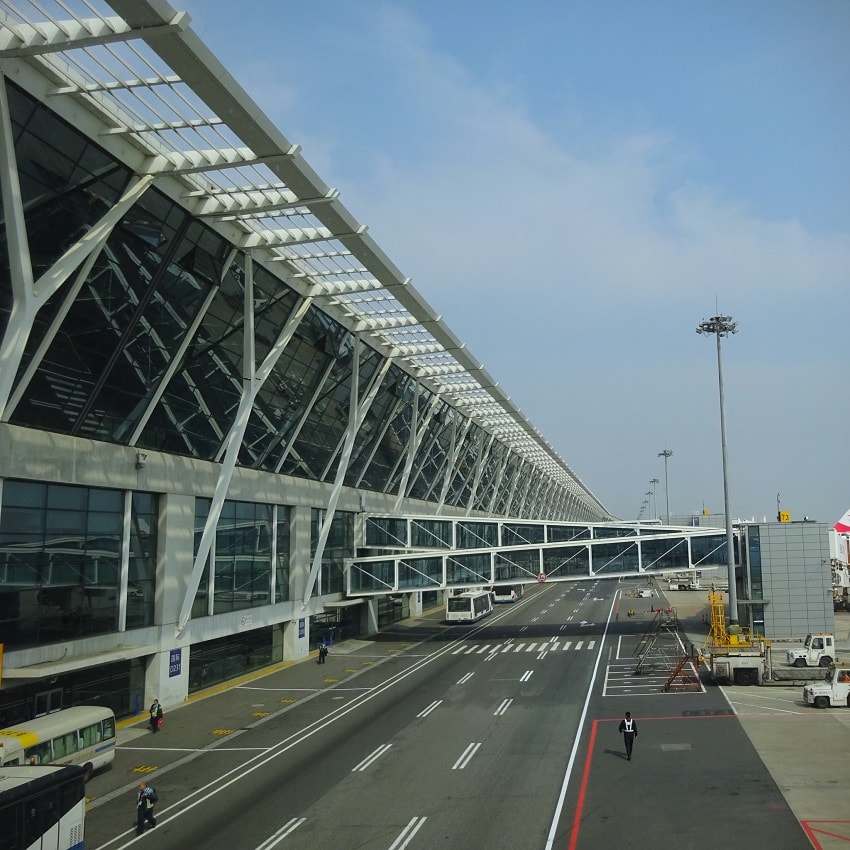
Source: Flickr via Thomas Devoogdt
Shanghai Pudong International Airport is the largest airport in China with an area of 16.14 square kilometers (6.23 square miles). It is the main international airport in the area, primarily serving Shanghai and international passengers. China Eastern Airlines and Shanghai Airlines use Shanghai Pudong International Airport as their main hub.
Currently, Shanghai Pudong International Airport has four runways. However, there is also a satellite terminal that has two additional runways. By the end of 2017, Shanghai Pudong International Airport saw over 70 million passengers, making it the second busiest airport in China and the ninth busiest in the world.
Did You Know?
The satellite terminal at Shanghai Pudong International Airport is the first ever such terminal built in the China and is the world’s largest detached airport terminal. Shanghai Pudong Airport’s satellite terminal has an area of 620,000 square meters (6,673,624.46 square feet).
-
George Bush Intercontinental Airport
Area: 18 km² (6.95 sq mi)
Total Passengers in 2017: 40,696,216
Number of Runways: 5
Airport Type: Public
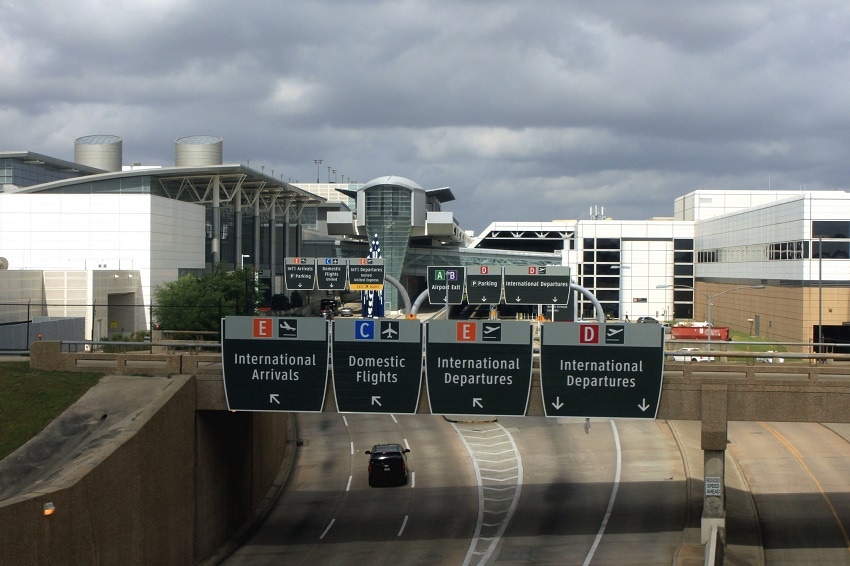
Source: Flickr via Prayitno
George Bush Intercontinental Airport is the second largest airport in Texas after the Dallas/Fort Worth International Airport. George Bush Intercontinental Airport is the largest of Houston’s three main airports, which are run by the Houston Airport System. This airport has an area of 18 square kilometers (6.95 square miles).
In 2017, more than 40 million passengers traveled through George Bust Intercontinental Airport, including over 10 million international travelers. The airport was named after George H. W. Bush (George Bush Sr.), the 41st President of the United States, who had raised his family in Houston.
Did You Know?
George Bush Intercontinental Airport has one of the largest collections of public art in Texas. The collection consists of sculptures, paintings, and photographs from Texas-based artists.
-
Washington Dulles International Airport
Area: 47.87 km² (18.48 sq mi)
Total Passengers in 2017: 22,892,504
Number of Runways: 5
Airport Type: Public
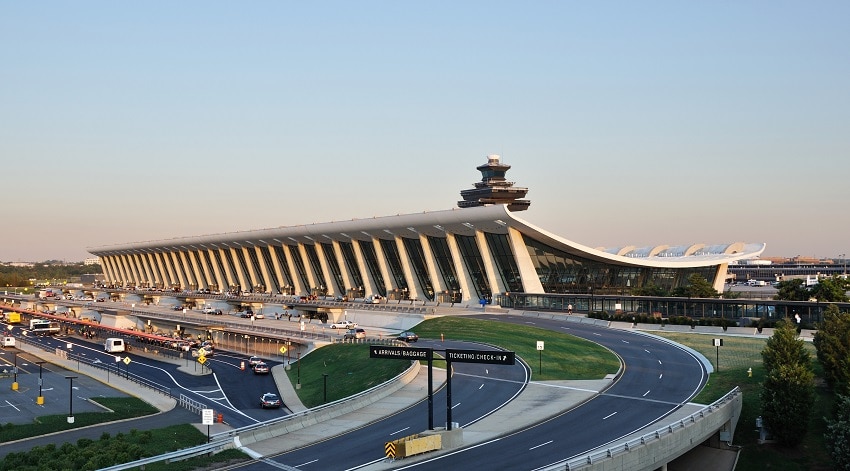
Source: Wikimedia Commons via Joe Ravi
Washington Dulles International Airport serves the Washington D.C. metro area and is the largest airport in the region with an area of 47.87 square kilometers (18.48 square miles). The airport was built in 1962 on 10,000 acres of land and additional acreage was acquired in 1999 and 2005.
Currently, Washington Dulles International Airport has four runways and a fifth runway is scheduled for future construction. Inside of Washington Dulles International Airport’s Concourse B is the main retail area, which is about 13,000 square feet (1,207.74 square meters).
Did You Know?
Washington Dulles International Airport was named after John Foster Dulles, who served as Secretary of State under President Dwight D. Eisenhower from 1953-1959.
-
Orlando International Airport
Area: 53.83 km² (21 sq mi)
Total Passengers in 2017: 46,992,000
Number of Runways: 4
Airport Type: Public
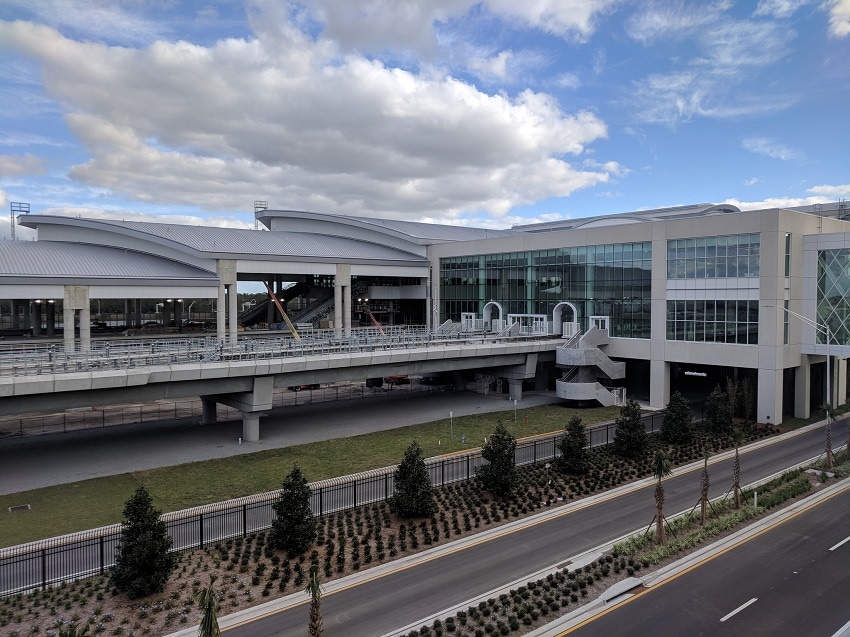
Source: Flickr via elisfkc
Orlando International Airport is the busiest and largest airport in Florida. With an area of 53.83 square kilometers (21 square miles), Orlando International Airport is one of the largest airports in the U.S. Orlando International Airport serves about 128,746 passengers daily, which amounts to about 46,992,000 passengers every year.
Between 2009 and 2014, improvements were made to Orlando International Airport’s terminals, airfields, and ground transportation. These improvements cost about $976 million over five years.
Did You Know?
Orlando International Airport recently announced that it was partnering with the US Customs and Border Protection (CBP) to improve the airport’s biometric program, i.e. facial recognition.
-
Dallas/Fort Worth International Airport
Area: 69.63 km² (26.9 sq mi)
Total Passengers in 2017: 67,092,194
Number of Runways: 7
Airport Type: Public
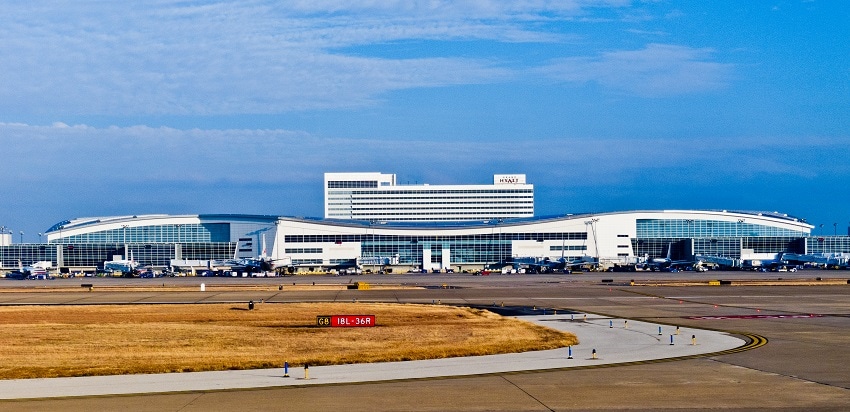
Source: Wikimedia Commons via Squeamish
Dallas/Fort Worth International Airport (DFW) is the second largest airport in the United States. DFW is a major hub and is the fourth busiest airport in the world and saw nearly 70 million passengers in 2017. Dallas/Fort Worth International Airport has an area of 69.63 square kilometers (26.9 square miles).
In recent years, Dallas Fort Worth International Airport has been expanding in order to accommodate all of the passengers and cargo coming in and out of the airport. Terminals A, B, C, and E are currently being expanded and improved.
Did You Know?
According to a study by SmartAsset, Dallas/Fort Worth International Airport is the seventh worst airport to fly out of in the U.S. during the holiday season because of its high cancellation rate.
-
Denver International Airport
Area: 137.29 km² (53 sq mi)
Total Passengers in 2017: 61,379,396
Number of Runways: 6
Airport Type: Public

Source: Pixnio
Denver International Airport is the largest airport in the United States with an area of 137.29 square kilometers (53 square miles). While it is the largest airport in the country, it is only the fifth busiest U.S. airport, averaging over 61 million passengers a year.
Denver International Airport is the primary source of income for the state of Denver and brings in about $26 billion annually. There are currently six runways at Denver International Airport and the sixth runway is the longest commercial runway in North America. The runway is 16,000 feet (4,876.8 meters) long and 200 feet (61 meters) wide.
Did You Know?
Denver International Airport is at the center of many conspiracy theories involving the Illuminati and the Freemasons. These rumors have persisted since Denver International Airport was first opened in 1995.
-
King Fahd International Airport (Dammam Airport)
Area: 776 km² (299.615 sq mi)
Total Passengers in 2017: 9,690,000+ (last update from 2016)
Number of Runways: 2
Airport Type: Public
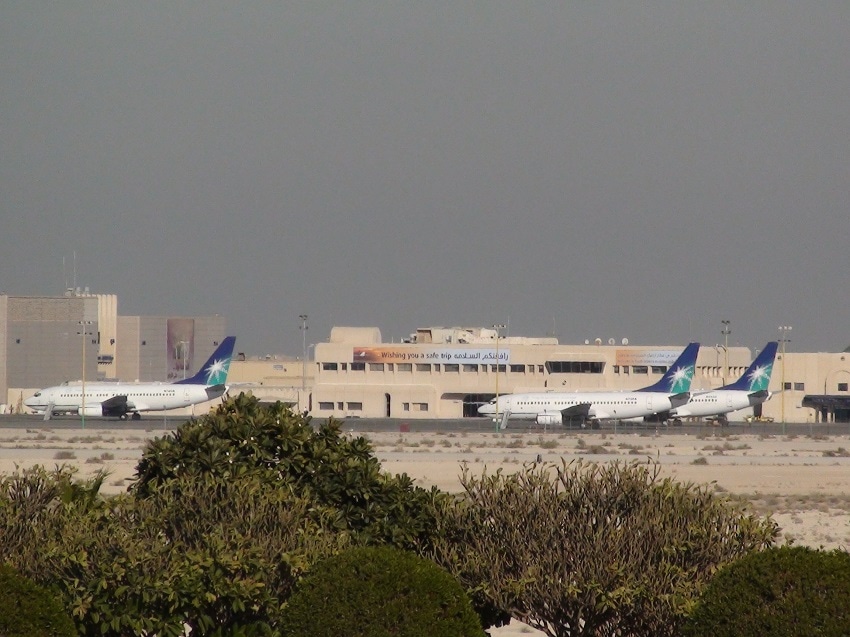
Source: Wikimedia Commons via Hmn1988
King Fahd International Airport, also called Dammam Airport, is the largest airport in the world in terms of size. Dammam Airport has an area of 776 square kilometers (299.615 square miles). Although King Fahd International Aiport is so large, there are only two terminals and two runways.
King Fahd International Airport services the entire eastern region of Saudi Arabia, including the area’s main urban cities such as Al Khobar, Dhahran, Dammam, Ras Tanura, Qatif, and Jubail Industrial City. Built in 1999, King Fahd International Airport was designed to handle 12 million passengers and 125,000t of cargo per year.
Did You Know?
Above the car parking facility at King Fahd International Airport is a mosque large enough for 2,000 worshippers.
